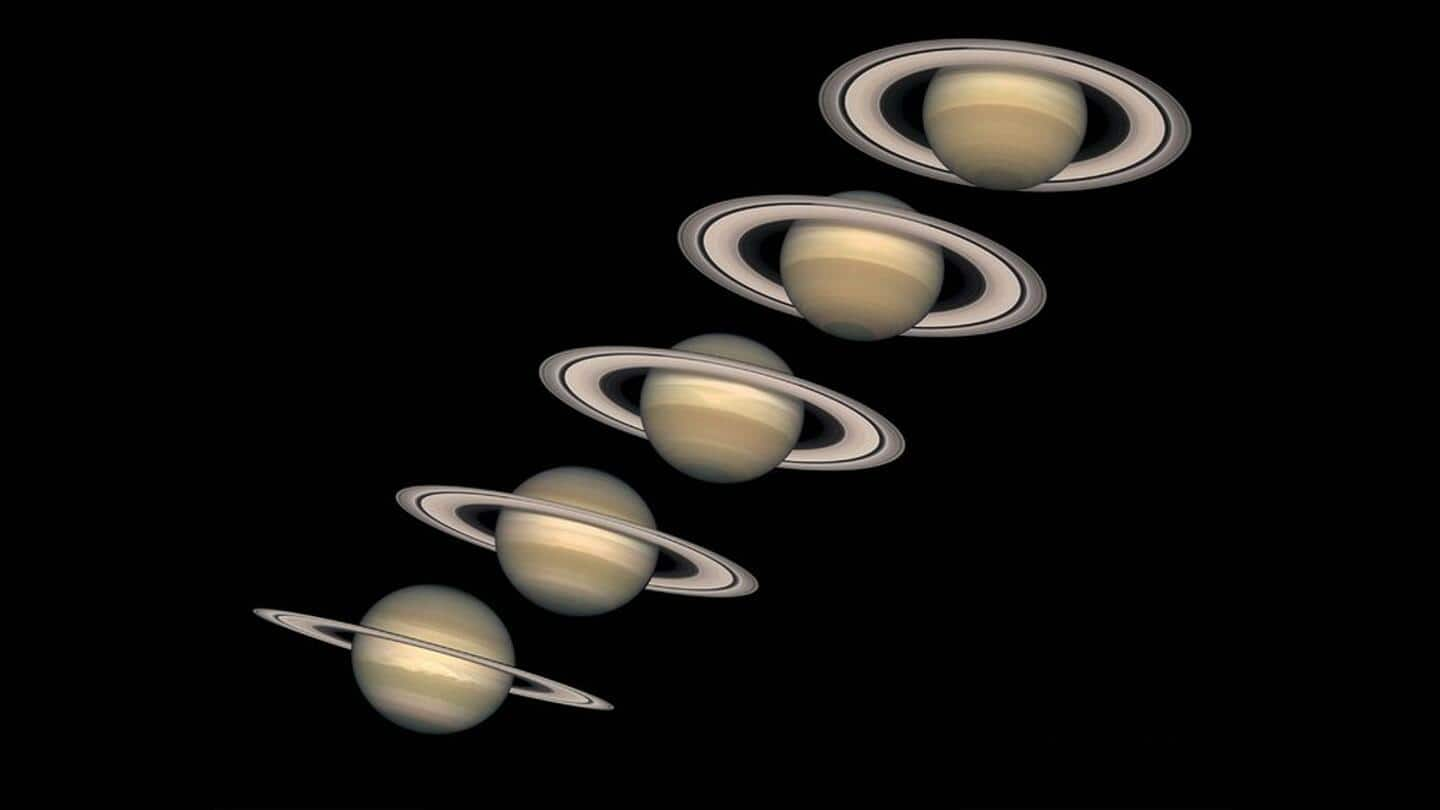
NASA's Hubble image reveals stunning details of Saturn's iconic rings
What's the story
NASA's Hubble Space Telescope has been capturing Saturn for several years as the planet makes its 29-year-long orbit around the Sun. The images reveal how the planet's rings appear differently as it makes the orbit. Saturn's rings open up "from just past edge-on to nearly fully open" as it moves around the Sun, as per the space agency.
Context
Why does this story matter?
Hubble Space Telescope, named in honor of astronomer Edwin Hubble, was launched in 1990. It was the first major optical telescope to be sent to space and it orbits the Earth from an altitude of 535km. The images of Saturn were taken by the telescope between 1996 to 2000 which reveal the planet's "changing rings" as it revolves around the Sun.
Twitter Post
Check out Saturn's extraordinary ring structure captured by Hubble
Ring in the new year! 🪐@NASAHubble took several photos of Saturn from 1996 to 2000, observing how its rings appear differently from our perspective as the gas giant makes its 29-year-long journey around the Sun.
— NASA (@NASA) December 31, 2022
Check out Saturn’s “changing” rings: https://t.co/ZUR97yP0Ku pic.twitter.com/E16ei3SnOH
Image
Saturn's rings are separated by gaps and divisions
Saturn's rings, when viewed from their edge, appear to be small and thin. But when the planet has traversed further along in its orbit such that it can be viewed from an angle, the full picture of its rings can be obtained. Saturn's ring system extends 282,000 kilometers from the planet and there are gaps and divisions between each ring.
Rings
What are Saturn's rings made up of?
Saturn's rings are thought to be composed of pieces of comets, asteroids, or shattered moons that were torn apart by powerful gravitational forces before they reached the planet. The particles that make up the rings range from small, dust-sized icy grains to larger chunks of material as big as a house, with a few particles as large as mountains.
Information
Saturn has been probed by four robotic missions
As seen in the picture, the gray rings circling Saturn are intersected by the Cassini Division, which measures 4,700 kilometers and breaks up the continuity of the halo-like rings. Saturn has been explored by four robotic missions so far, including the Cassini spacecraft.